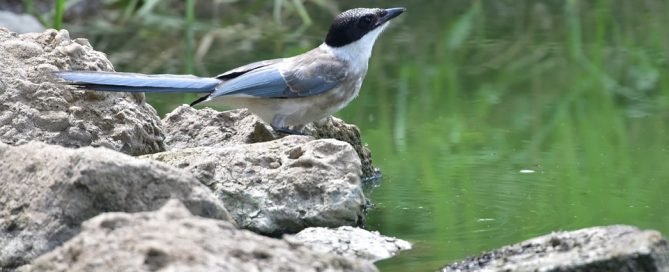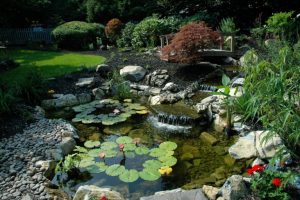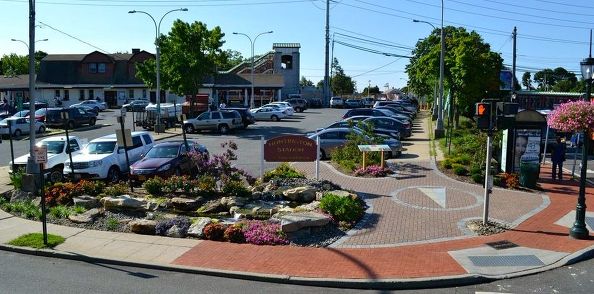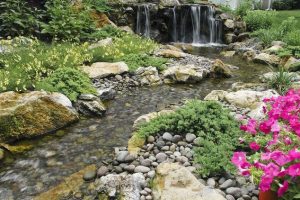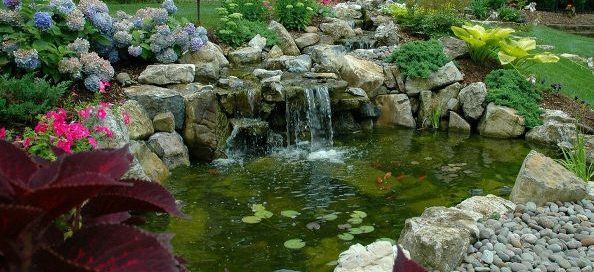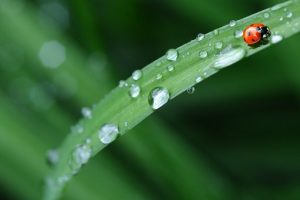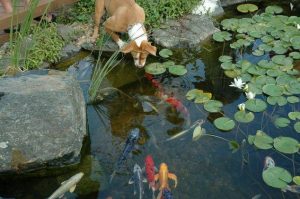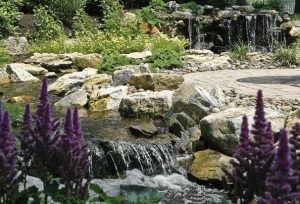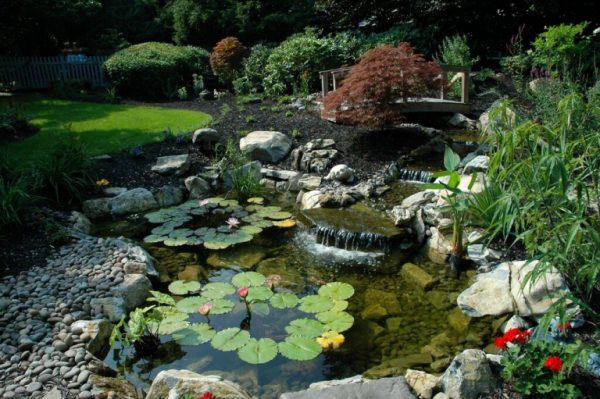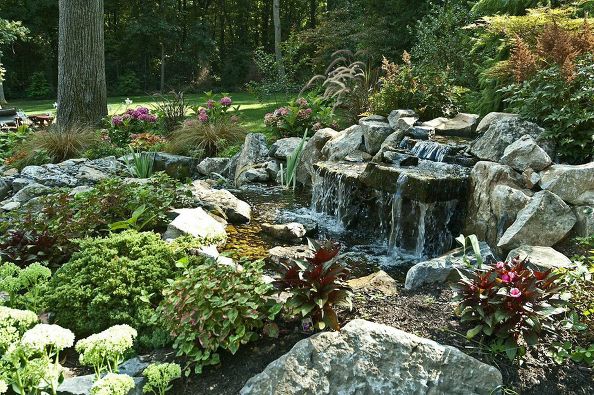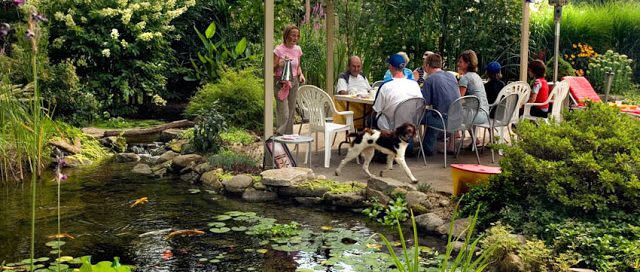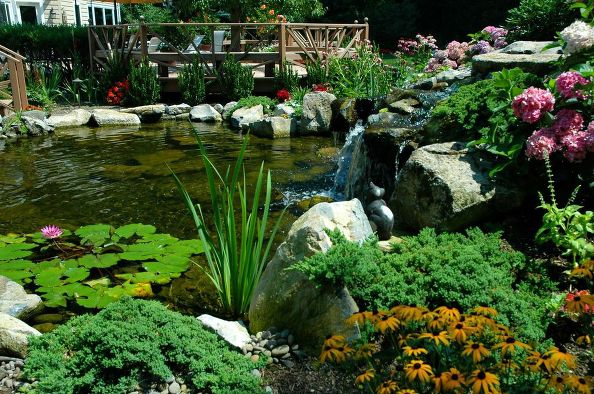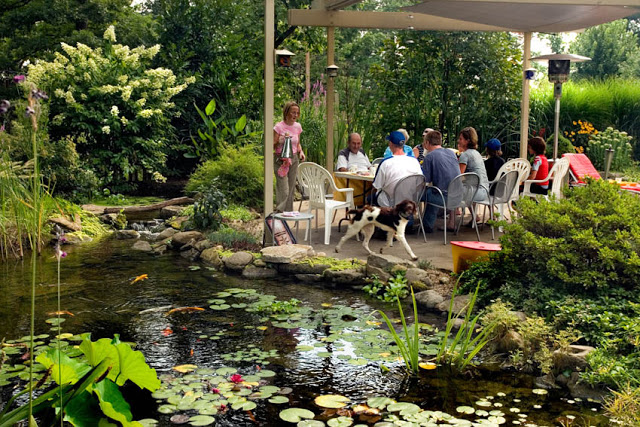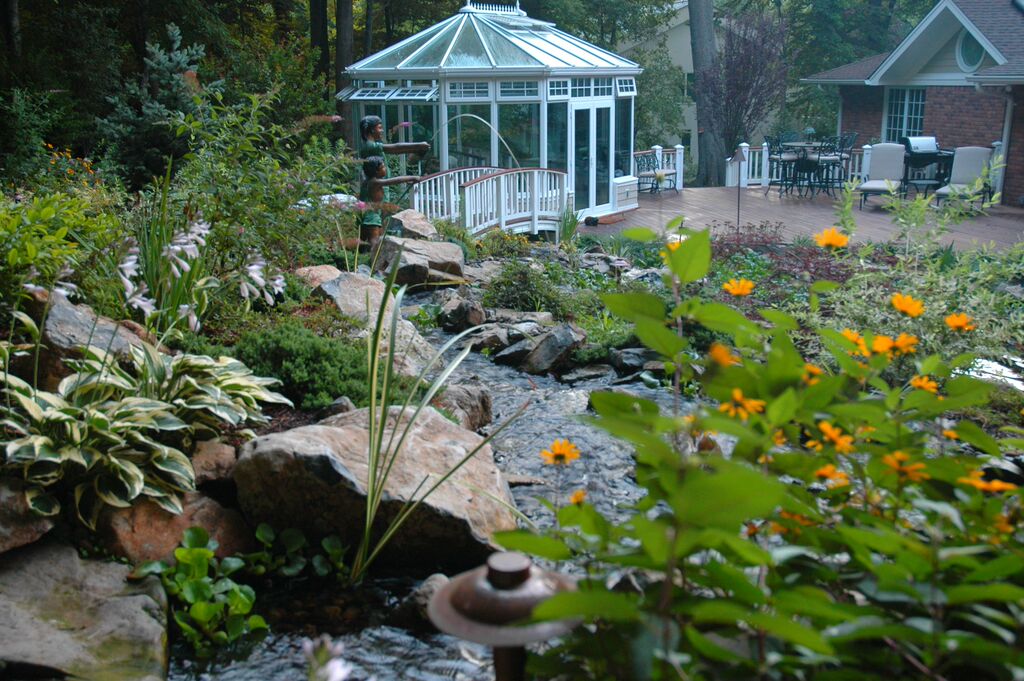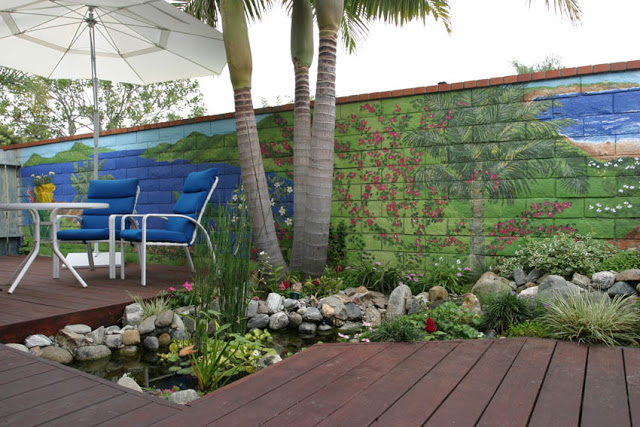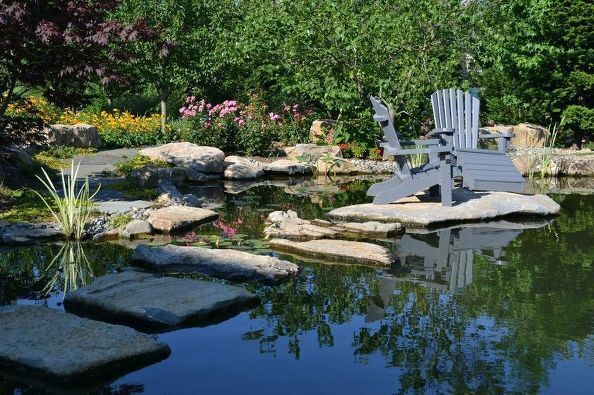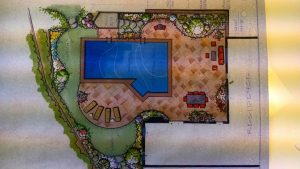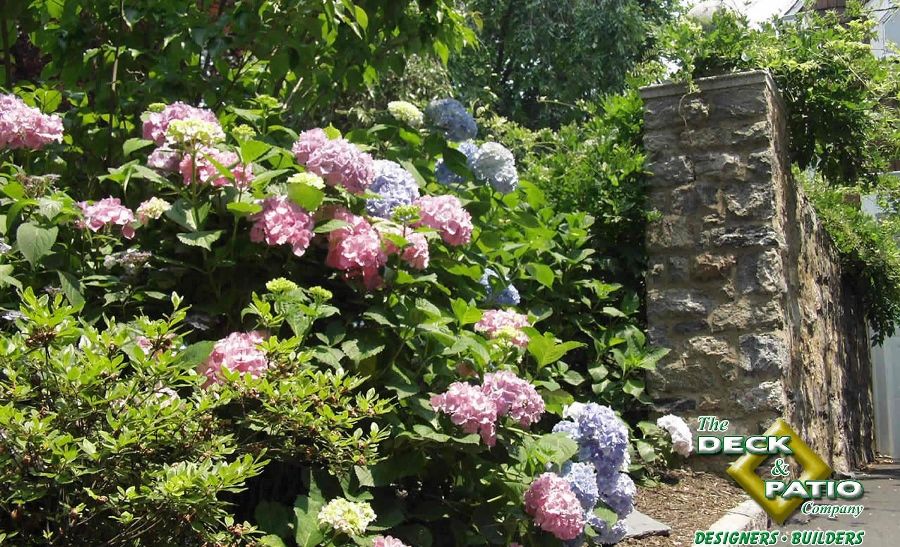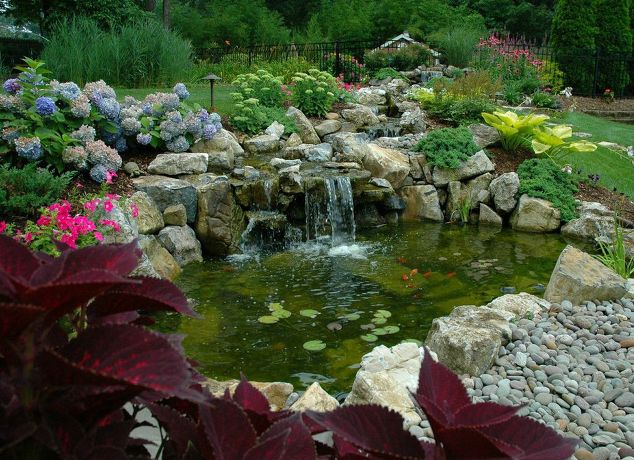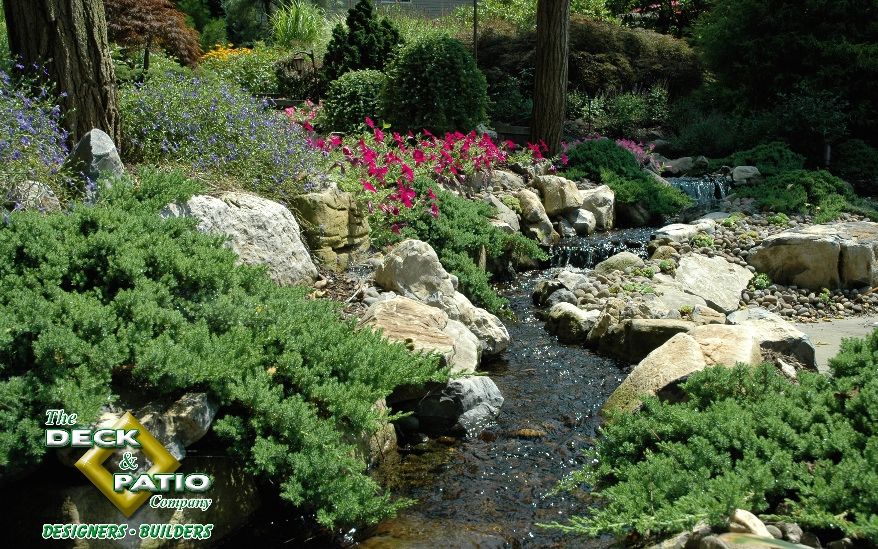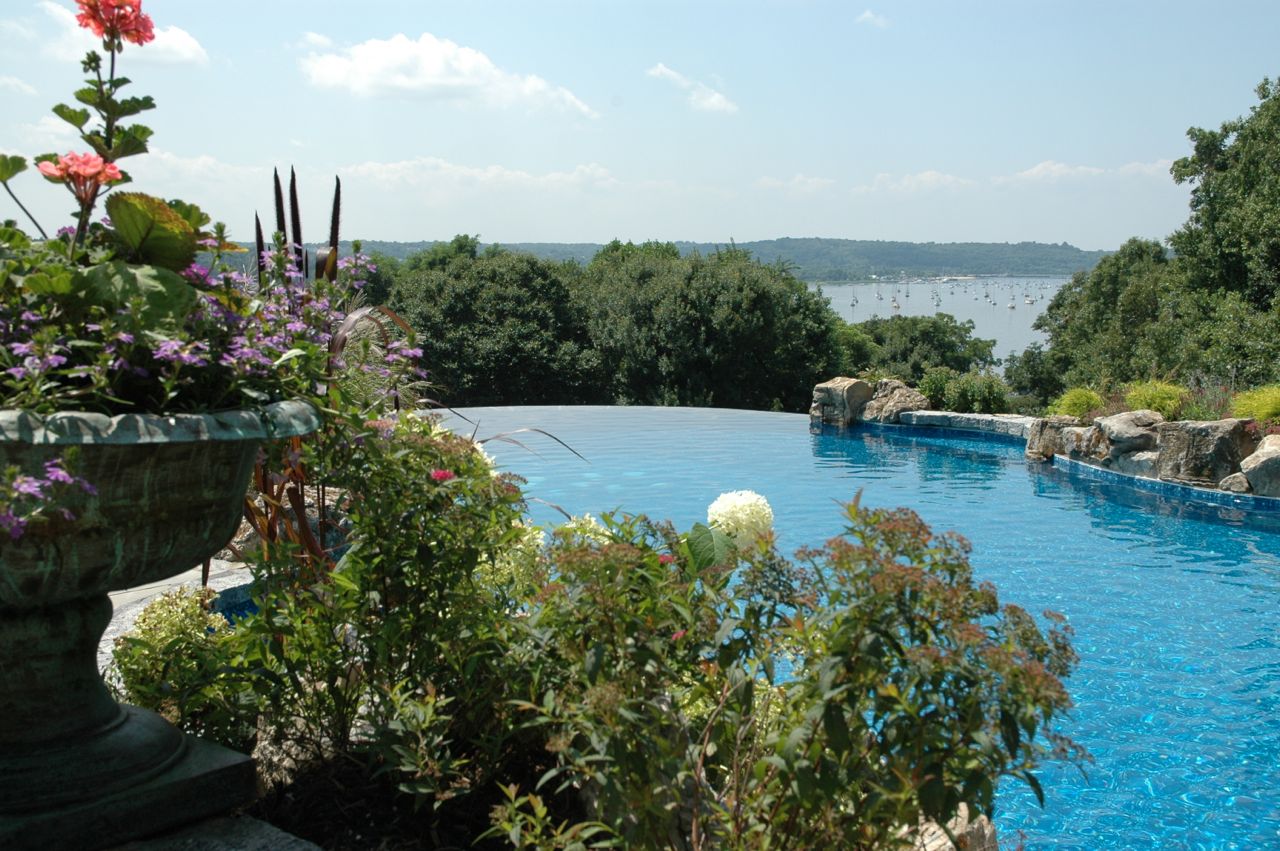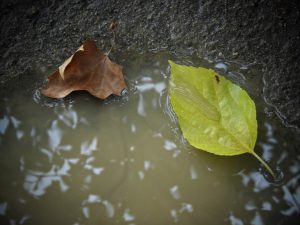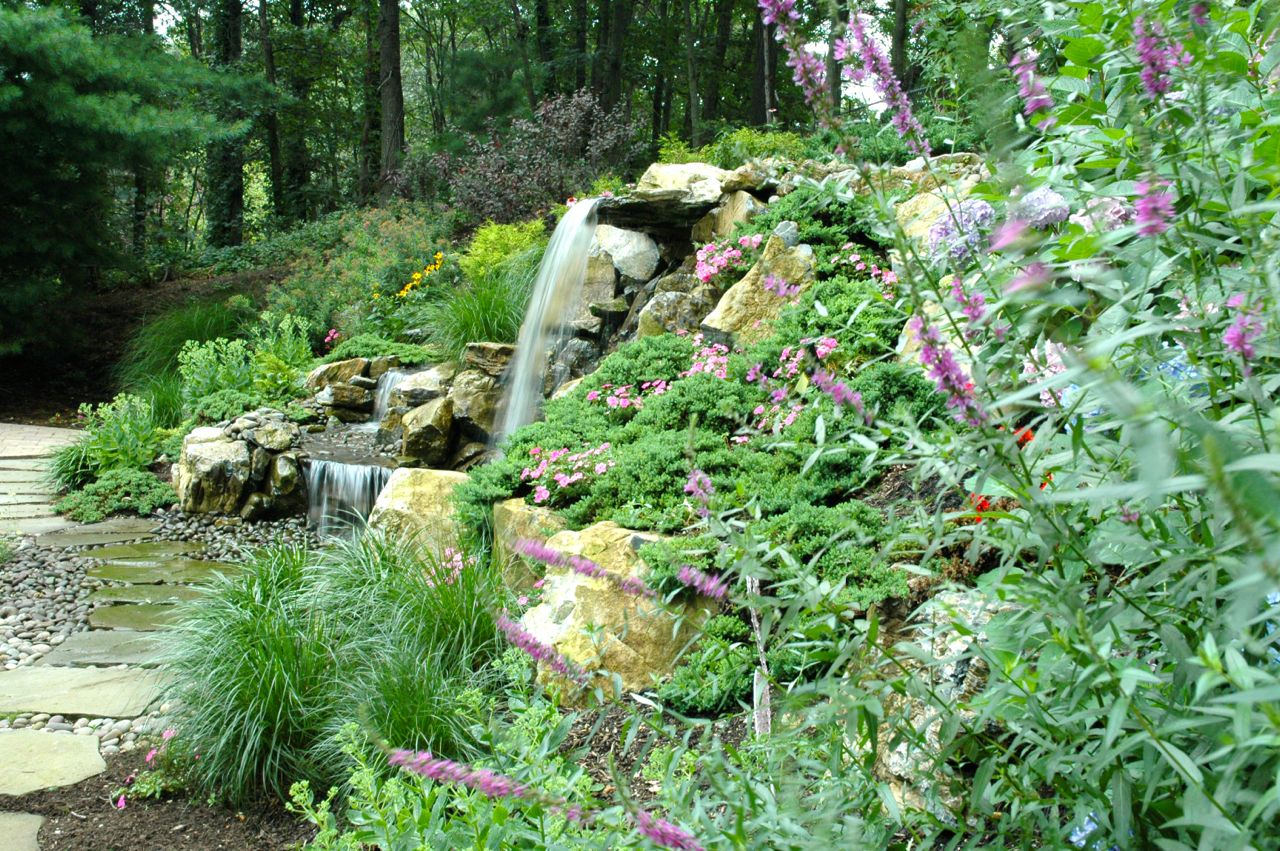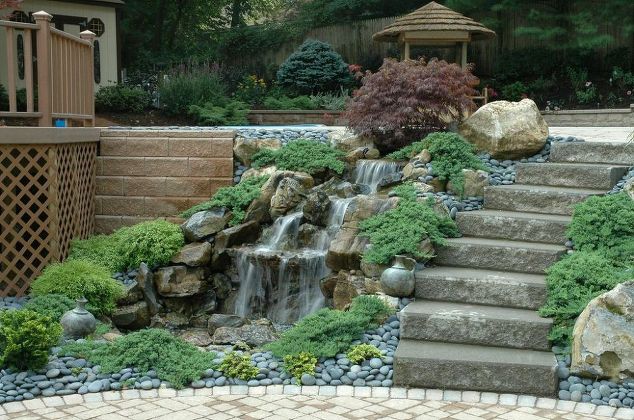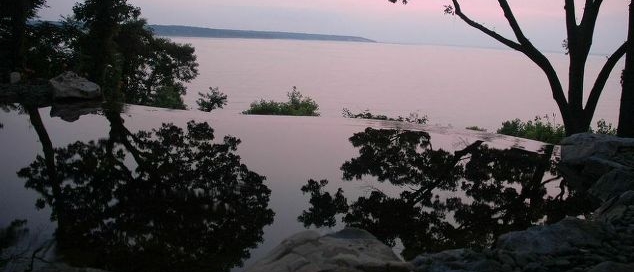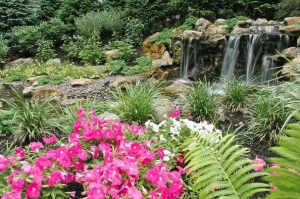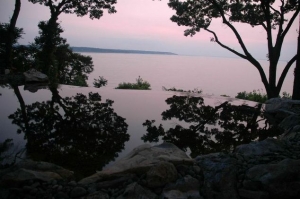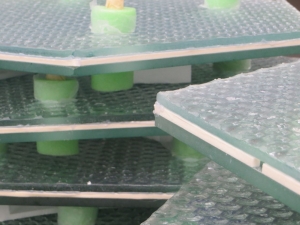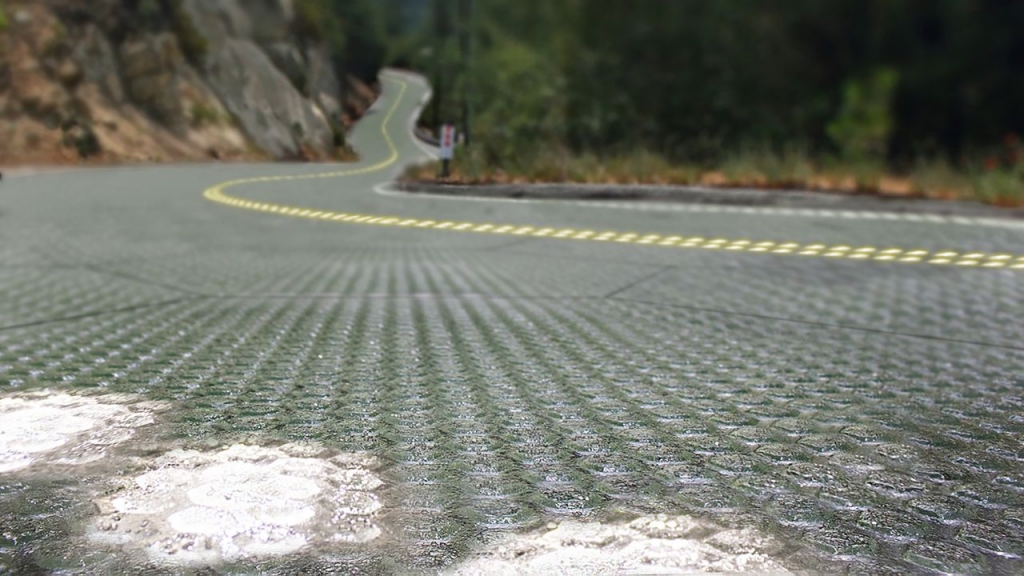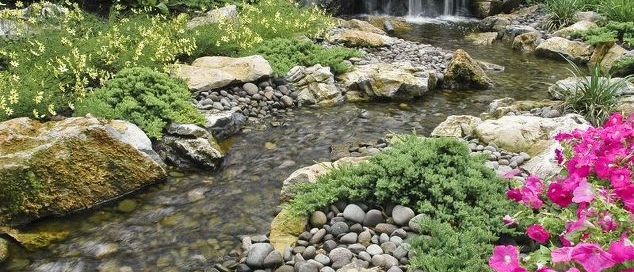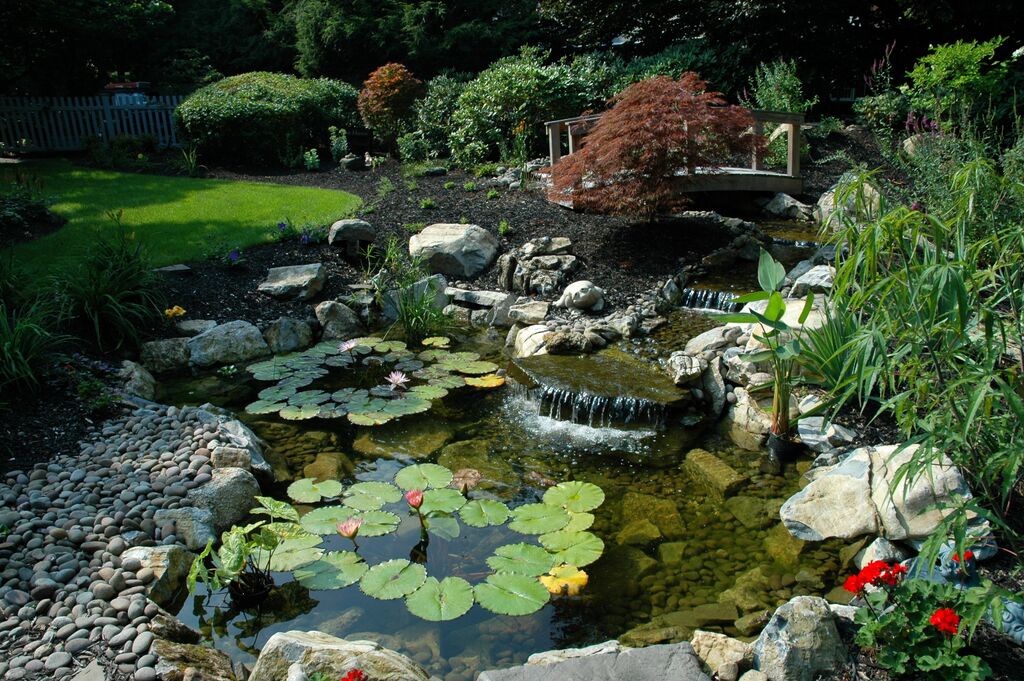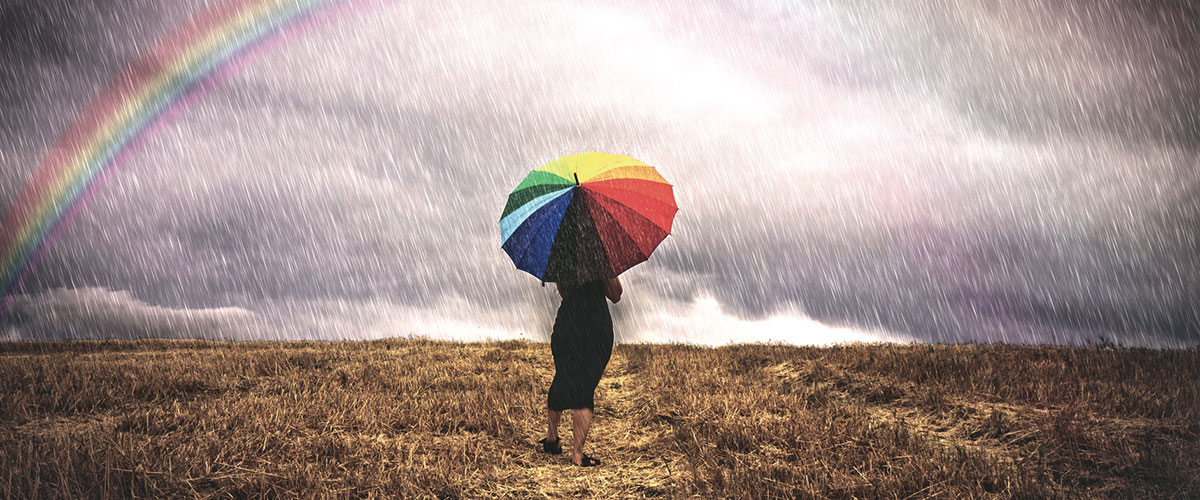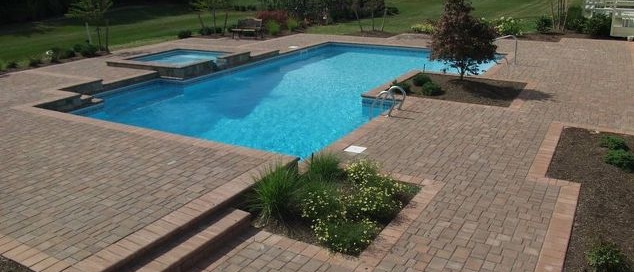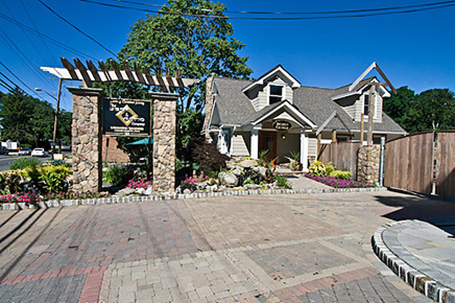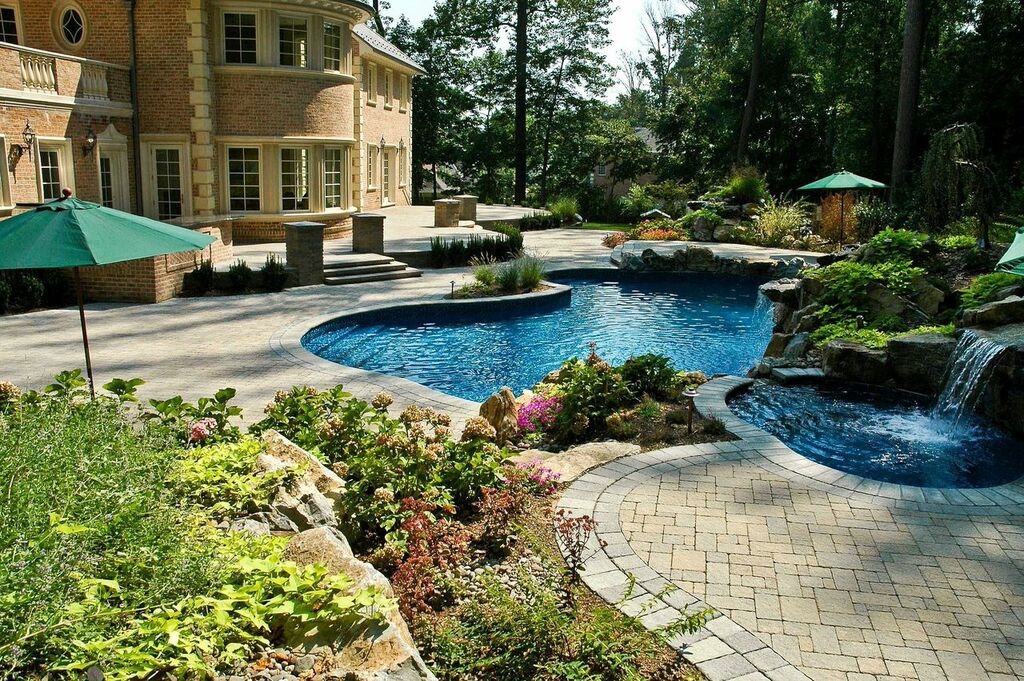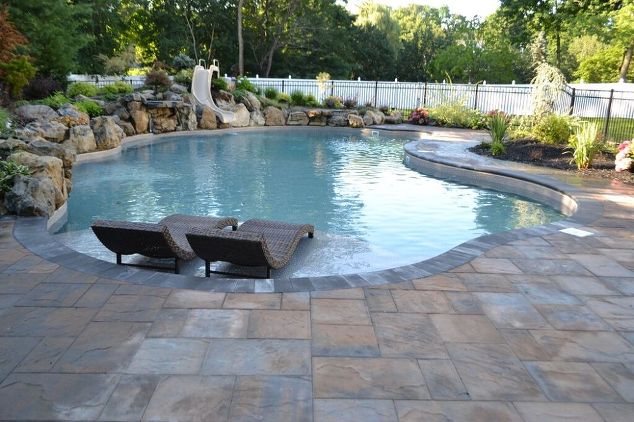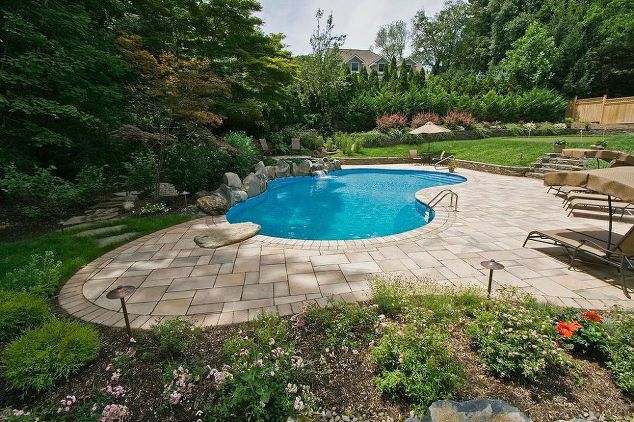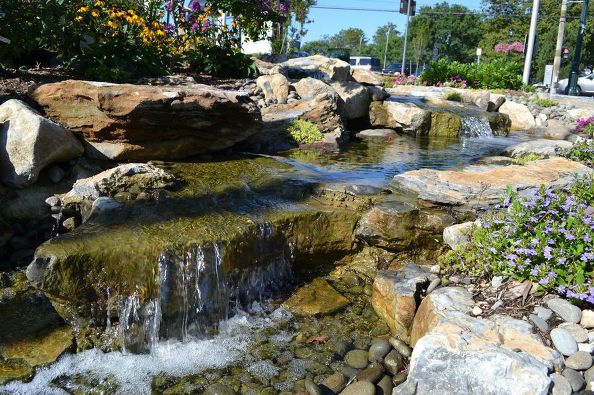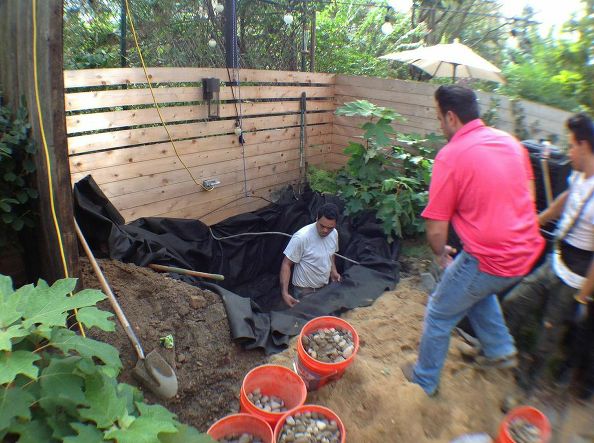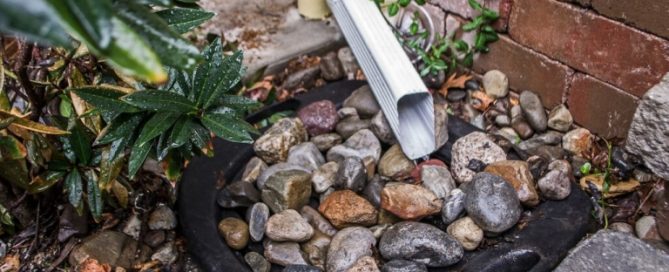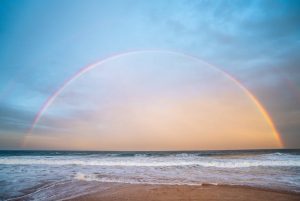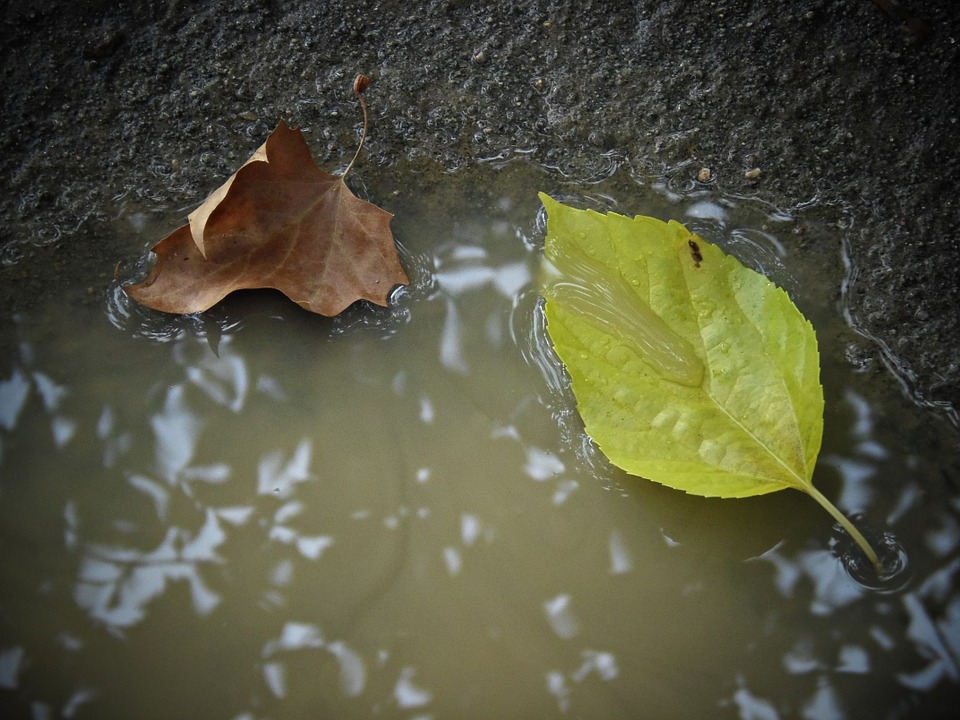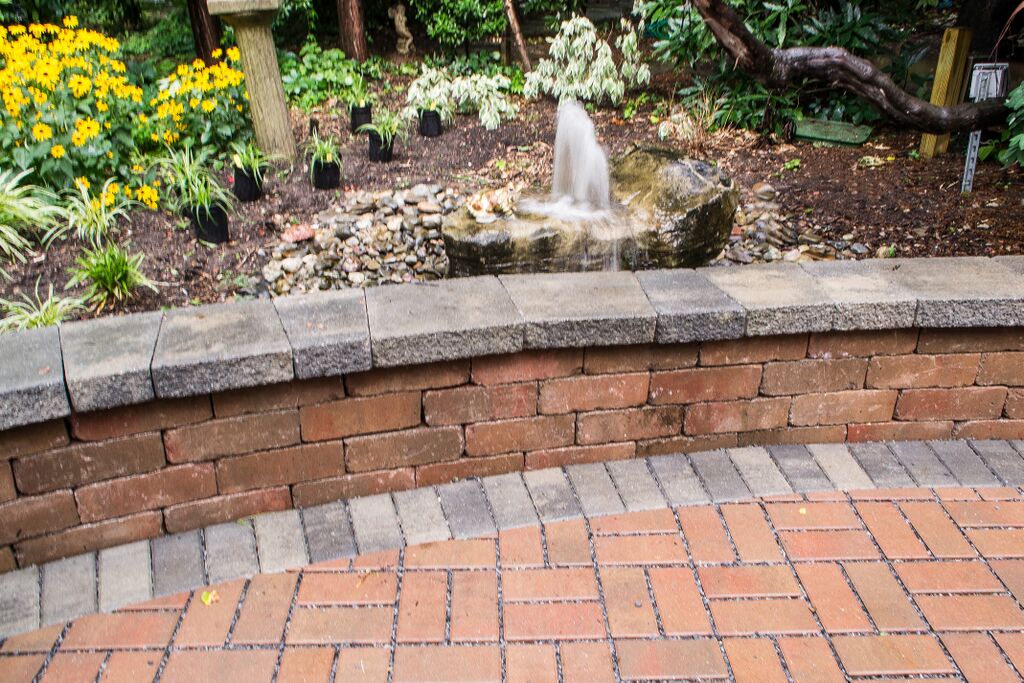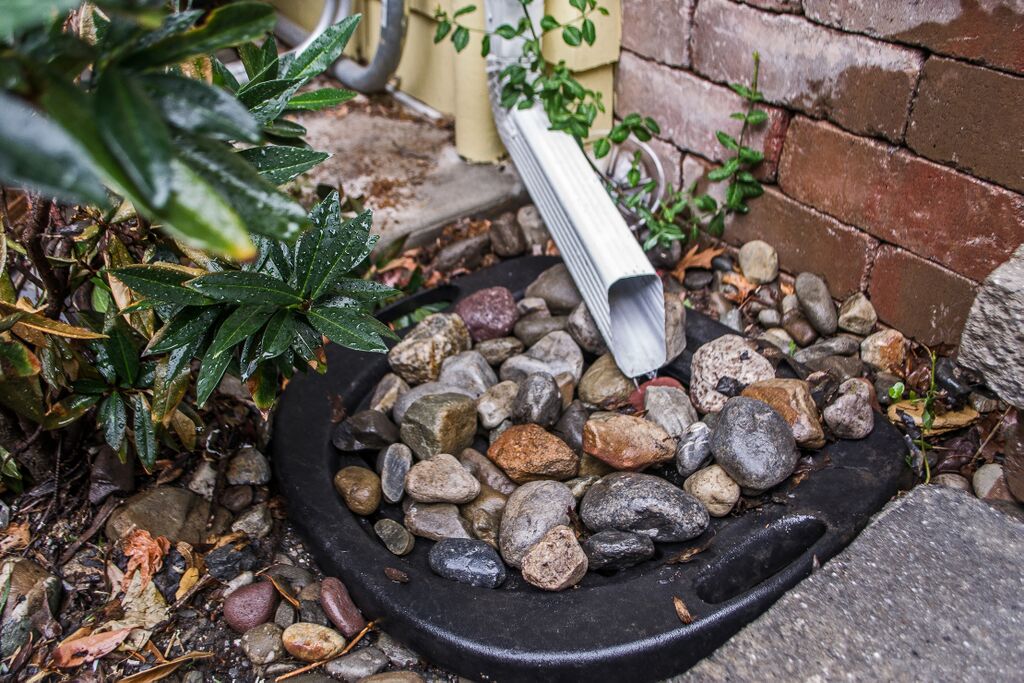Earth Day 2018: Eco-Friendly Backyard Ponds
Backyard ponds with waterfalls and streams can be created in eco-friendly ways so they not only do no harm, but also help improve the environment.
Isn’t that a comforting idea as Earth Day (April 22nd) approaches?
Fish ponds, for example, naturally attract — and provide a haven for — other wildlife that children (as well as adults) love: frogs, salamanders, song birds, etc.
Of course, all these creatures are delightful to watch and listen to. More than that, their presence offer natural ways to a healthier environment.
Frogs eat algae in the water which contributes to keeping the water clean; adult toads aid in controlling insects, as do the birds the water attracts.
Plus, the koi, which are so much fun to feed, eat any mosquito larva that might develop.
It is essential to choose the right stones and gravel (which provide the correct ph value for fish and plants), in order to keep a pond healthy in a natural way.
For this Deck and Patio project (right), we also planted a beautiful Japanese maple that shades the pondscape’s bridge; bright red geraniums add a strong burst of color (bottom right of photo.)
Not all sustainable water feature projects are for private use. Deck and Patio created this stream and waterfall spot (above) in cooperation with the Town of Huntington (Long Island) where we installed the water feature beside a paver pathway at the area train station parking lot.
The pathway is made of permeable pavers by Techo-Bloc, which were put over gravel and a rubber liner, which capture and filter the path’s rainwater runoff before it reaches the underground Aquascape Inc. reservoir installed at the end of the stream.
There is enough captured water at this train station water feature to not only sustain itself, but to also irrigate all the plantings around the water feature. Plus, this eco-friendly system keeps any non-filtered rainwater from going into the Town’s sewer system and on into beautiful Huntington Bay.
For this Deck and Patio “pond-less” waterfall and stream, the water required to keep it topped off and refreshed is harvested from the roof of the clients’ house.
“Such a water feature is run entirely without using city water,” says Dave Stockwell, owner of Deck and Patio. “It acts as a ‘green’ maintenance-free source that operates daily March through December. “And any excess harvested rainwater can be used for irrigation of the property.”
“When you attract wildlife such as this North American Bullfrog into your yard and other amphibians who like to hatch eggs in or near water, you contribute to a healthy eco-system,” Dave.
“Frogs, for example, eat algae in the water, thereby helping to keep it clean. Adult toads also aid your garden because they help control insects — as do the birds that the water feature will naturally attract.” (Photo: Wikipedia/Tigershrike)
Happy Earth Day, everyone!

